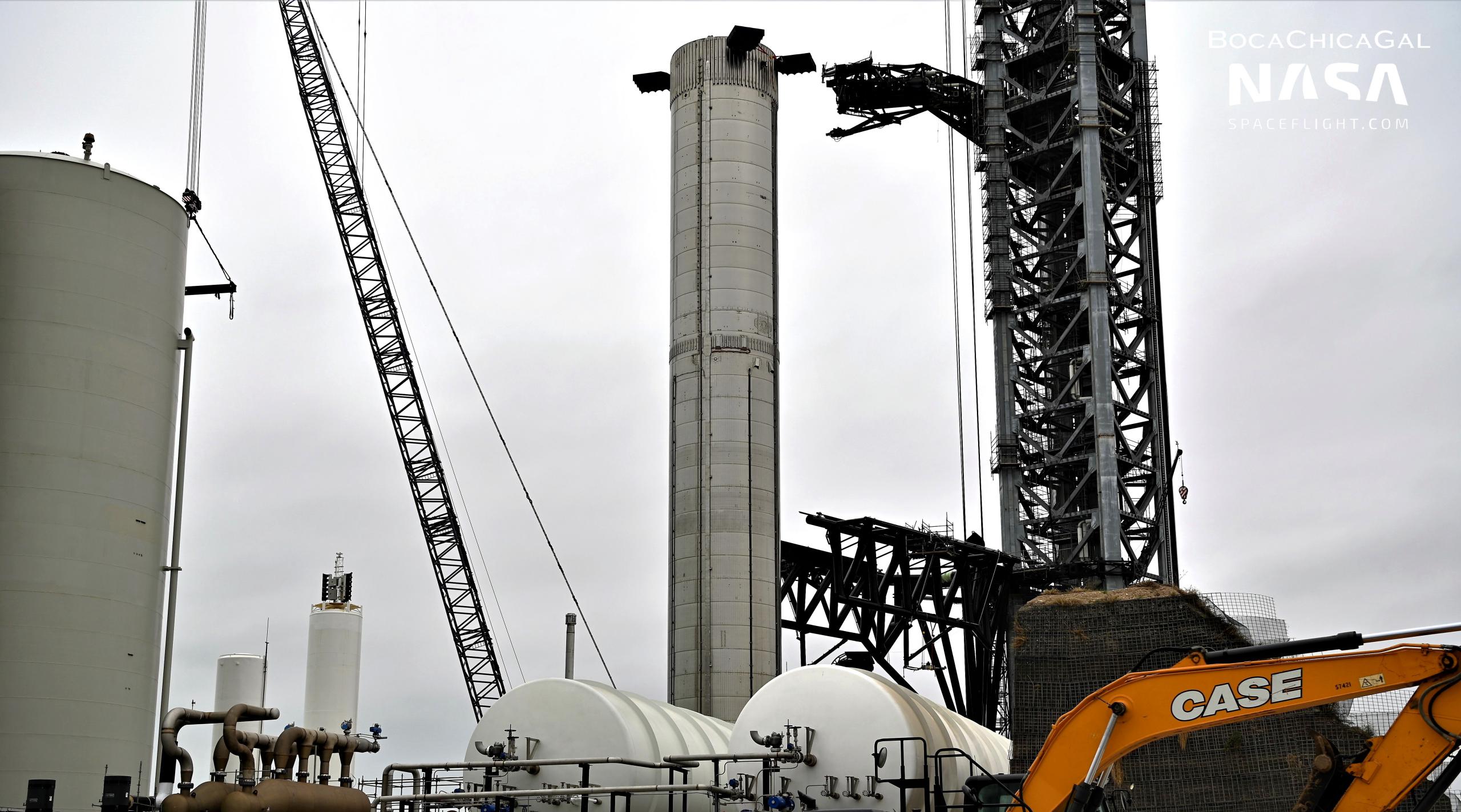
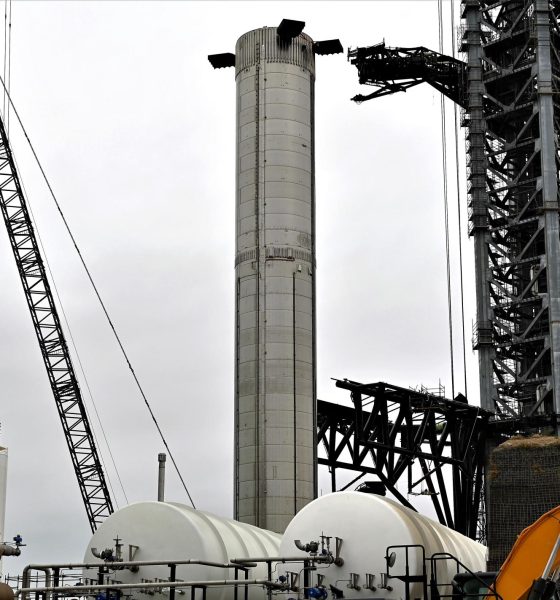
News
SpaceX rolls Super Heavy booster to orbital launch mount
For the third time in four months, SpaceX has rolled the first potentially flightworthy Super Heavy booster towards Starbase’s orbital launch mount.
Combined with a large crane – fitted with a jig solely used to lift boosters – moving to a spot just beside the booster, it’s clear that SpaceX is preparing to reinstall Super Heavy Booster 4 (B4) on the orbital launch mount. In the context of its unusual history, though, what happens next to the first more or less finished prototype of the largest rocket booster ever built is less clear.
After a shockingly quick assembly over the course of six summer weeks, Super Heavy Booster 4 rolled out of Starbase’s ‘high bay’ facility and headed to the nearby orbital launch complex, where it was installed on a custom ‘mount’ designed to support booster testing and orbital launches. It’s now clear that during that early August photo opportunity and fit test, Booster 4 was nowhere close to finished. Nor, apparently, was it anywhere close to complete one month later when it returned to the orbital pad for the second time after another few weeks of work back at the high bay.
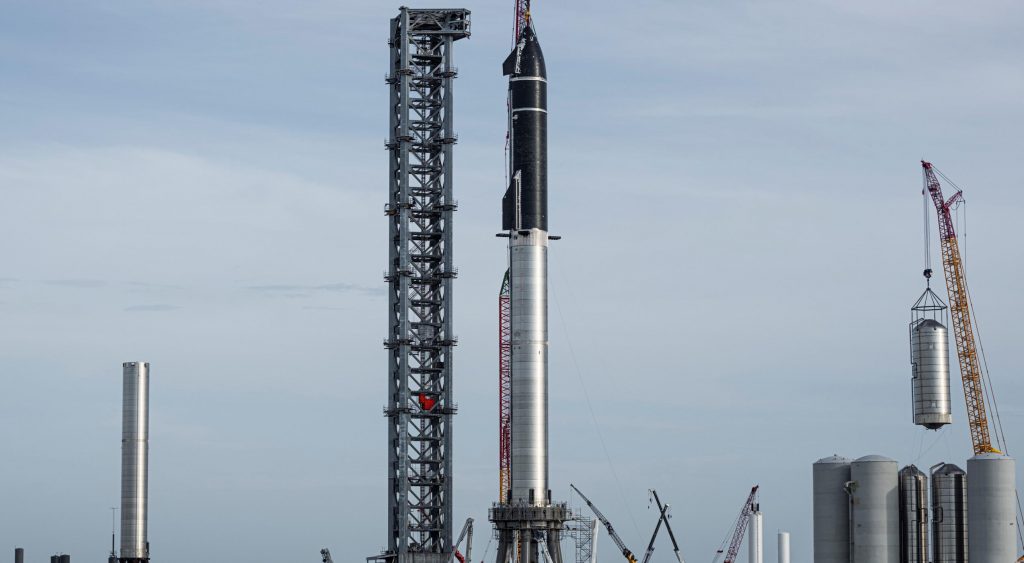
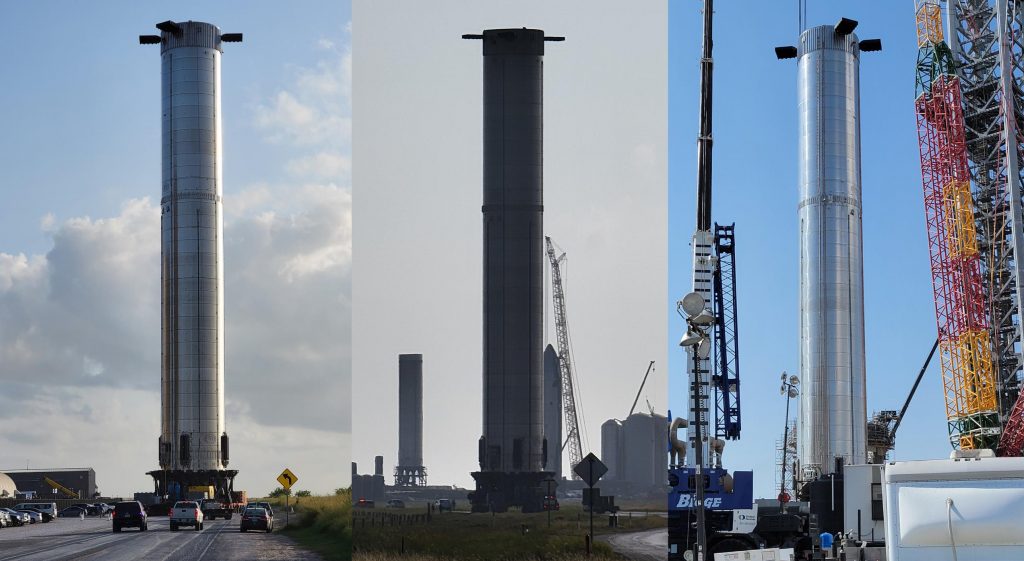
Three months (almost 14 weeks or 100 days) after the Super Heavy prototype’s second trip to the pad, SpaceX has yet to attempt to put the booster through a single proof test. There also appears to be a significant amount of work left to finish installing external ‘aerocovers’ and a heat shield meant to enclose all 29 of its Raptor engines. In the three-year history of Starbase, there isn’t a single prototype of the roughly two-dozen SpaceX has built, tested, and even flown that’s spent even half as long as Super Heavy B4 between apparent structural completion and its first test. Perhaps the fact that Booster 4 is a first-of-its-kind pathfinder explains SpaceX’s uncharacteristic sluggishness or reluctance to actually test the rocket.
In every other instance, SpaceX’s approach to Starship development has been to move incredibly quickly, build a large number of prototypes, and rapidly test those prototypes – often resulting in catastrophic failures. Data is gathered from those failures (SN1, SN3, SN4, SN8, SN9, SN10, SN11, and half a dozen smaller test tanks serve as examples), changes are made, and then the new and improved prototypes that follow repeat the process until SpaceX arrives at a successful design.
Super Heavy B4’s circuitous path has been almost nothing like those of its predecessors. That could also be partly explained by the unavailability of a stand or facilities capable of truly proof testing a Super Heavy, which necessitates a supply of around 3200 tons (7M lb) of liquid nitrogen (LN2; for a cryogenic proof test with full tanks), another 3200 tons of a combination of liquid methane (LCH4) and oxygen (LOx), and the ability to ignite – and survive – as many as 29 to 33 Raptor engines. The suborbital stands SpaceX has used to proof Starships and even Super Heavy Booster 3 don’t even have half the storage capacity required to fully test a booster and the mounts and their surroundings would likely be catastrophically damaged or destroyed by the thrust and blast created by dozens of Raptors.
Still, SpaceX could have theoretically put Booster 4 through a partial cryoproof and maybe fired up as many as nine Raptors at once – not a replacement for full proof testing but still plenty to ensure Super Heavy’s structural integrity and gather invaluable data on clustered Raptor performance. Instead, of course, Super Heavy B4 has sat at Starbase’s former landing zone for more than three months while teams removed engines, reinstalled engines, half-installed a full Raptor heat shield; and installed two of six or seven ‘aerocovers’ needed to protect heat exchangers, racks of pressure vessels, and hydraulic systems installed on the booster’s aft.
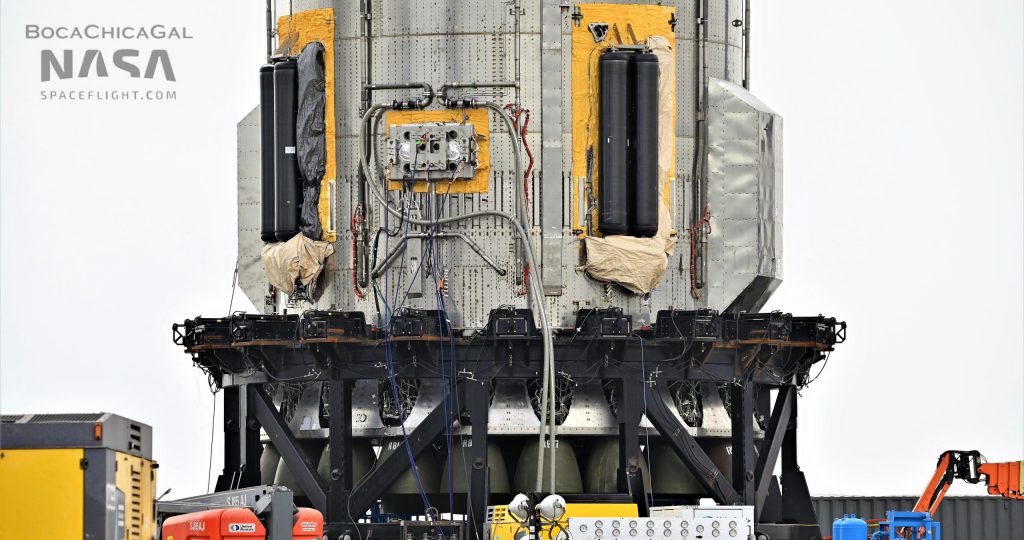
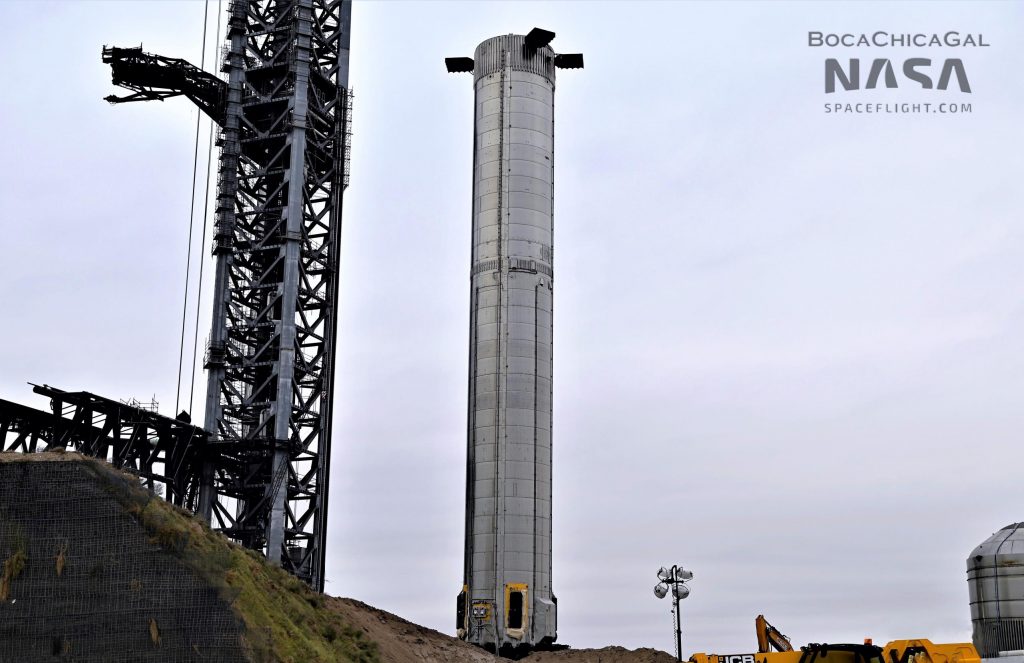
This is all to say that from the outside looking in, Booster 4’s path towards testing and flight has been almost entirely different from that of any other Starship prototype. While still quick in comparison with other launch vehicle development programs, relative to other Starship and Super Heavy prototypes, the rate of B4 progress has been far slower – strongly implying that something is seriously wrong with the booster, that SpaceX no longer feels that partial testing is worth the effort, that finishing Booster 4 just hasn’t been a priority for several months, or some combination of the above.
What that ultimately means is that it’s almost impossible to predict what Super Heavy B4’s future holds beyond the clear evidence that SpaceX will soon reinstall to reinstall it on an orbital launch mount that’s much closer to completion than it was the last time B4 was installed. At this point, it’s just as likely that the booster’s third launch mount installation will just be another mechanical fit test, though the hope is that it will kick off full-scale pneumatic and cryogenic proof testing. It could even culminate in the static fire of some or all of its 29 Raptor engines, which have been installed for several months.

Elon Musk
Tesla CEO Elon Musk sends rivals dire warning about Full Self-Driving
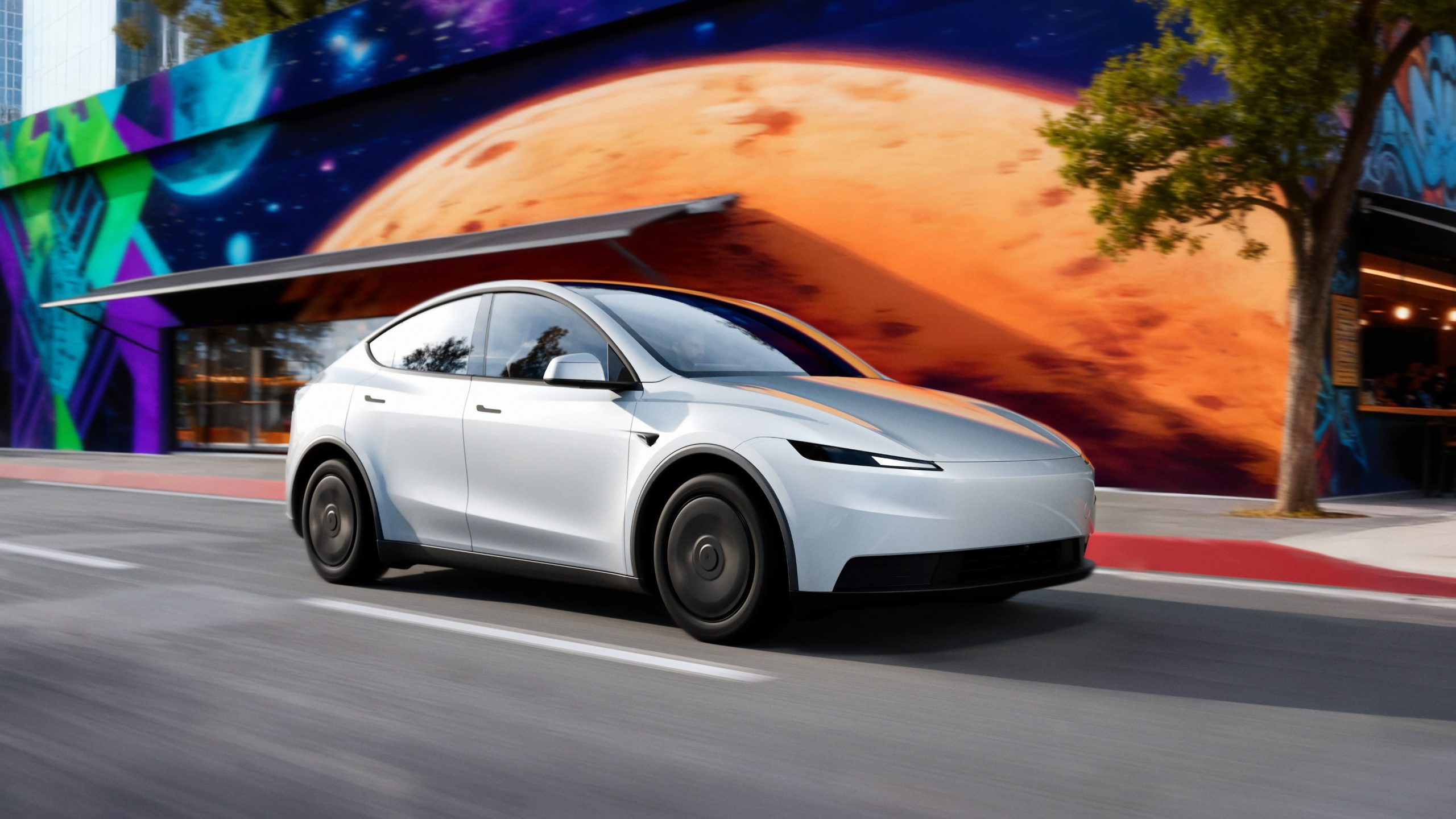
Tesla CEO Elon Musk revealed today on the social media platform X that legacy automakers, such as Ford, General Motors, and Stellantis, do not want to license the company’s Full Self-Driving suite, at least not without a long list of their own terms.
“I’ve tried to warn them and even offered to license Tesla FSD, but they don’t want it! Crazy,” Musk said on X. “When legacy auto does occasionally reach out, they tepidly discuss implementing FSD for a tiny program in 5 years with unworkable requirements for Tesla, so pointless.”
I’ve tried to warn them and even offered to license Tesla FSD, but they don’t want it! Crazy …
When legacy auto does occasionally reach out, they tepidly discuss implementing FSD for a tiny program in 5 years with unworkable requirements for Tesla, so pointless. 🤷♂️
🦕 🦕
— Elon Musk (@elonmusk) November 24, 2025
Musk made the remark in response to a note we wrote about earlier today from Melius Research, in which analyst Rob Wertheimer said, “Our point is not that Tesla is at risk, it’s that everybody else is,” in terms of autonomy and self-driving development.
Wertheimer believes there are hundreds of billions of dollars in value headed toward Tesla’s way because of its prowess with FSD.
A few years ago, Musk first remarked that Tesla was in early talks with one legacy automaker regarding licensing Full Self-Driving for its vehicles. Tesla never confirmed which company it was, but given Musk’s ongoing talks with Ford CEO Jim Farley at the time, it seemed the Detroit-based automaker was the likely suspect.
Tesla’s Elon Musk reiterates FSD licensing offer for other automakers
Ford has been perhaps the most aggressive legacy automaker in terms of its EV efforts, but it recently scaled back its electric offensive due to profitability issues and weak demand. It simply was not making enough vehicles, nor selling the volume needed to turn a profit.
Musk truly believes that many of the companies that turn their backs on FSD now will suffer in the future, especially considering the increased chance it could be a parallel to what has happened with EV efforts for many of these companies.
Unfortunately, they got started too late and are now playing catch-up with Tesla, XPeng, BYD, and the other dominating forces in EVs across the globe.
News
Tesla backtracks on strange Nav feature after numerous complaints

Tesla is backtracking on a strange adjustment it made to its in-car Navigation feature after numerous complaints from owners convinced the company to make a change.
Tesla’s in-car Navigation is catered to its vehicles, as it routes Supercharging stops and preps your vehicle for charging with preconditioning. It is also very intuitive, and features other things like weather radar and a detailed map outlining points of interest.
However, a recent change to the Navigation by Tesla did not go unnoticed, and owners were really upset about it.
For trips that required multiple Supercharger stops, Tesla decided to implement a naming change, which did not show the city or state of each charging stop. Instead, it just showed the business where the Supercharger was located, giving many owners an unwelcome surprise.
However, Tesla’s Director of Supercharging, Max de Zegher, admitted the update was a “big mistake on our end,” and made a change that rolled out within 24 hours:
The naming change should have happened at once, instead of in 2 sequential steps. That was a big miss on our end. We do listen to the community and we do course-correct fast. The accelerated fix rolled out last night. The Tesla App is updated and most in-car touchscreens should…
— Max (@MdeZegher) November 20, 2025
The lack of a name for the city where a Supercharging stop would be made caused some confusion for owners in the short term. Some drivers argued that it was more difficult to make stops at some familiar locations that were special to them. Others were not too keen on not knowing where they were going to be along their trip.
Tesla was quick to scramble to resolve this issue, and it did a great job of rolling it out in an expedited manner, as de Zegher said that most in-car touch screens would notice the fix within one day of the change being rolled out.
Additionally, there will be even more improvements in December, as Tesla plans to show the common name/amenity below the site name as well, which will give people a better idea of what to expect when they arrive at a Supercharger.
News
Dutch regulator RDW confirms Tesla FSD February 2026 target
The regulator emphasized that safety, not public pressure, will decide whether FSD receives authorization for use in Europe.
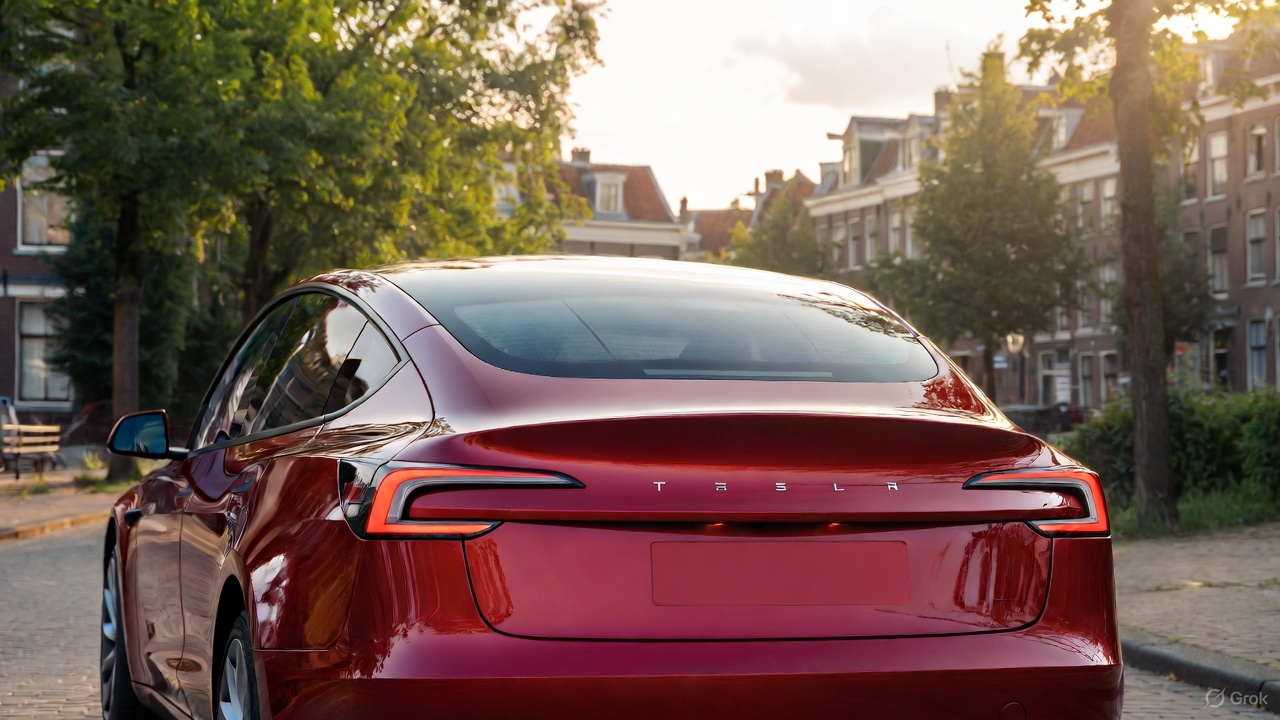
The Dutch vehicle authority RDW responded to Tesla’s recent updates about its efforts to bring Full Self-Driving (Supervised) in Europe, confirming that February 2026 remains the target month for Tesla to demonstrate regulatory compliance.
While acknowledging the tentative schedule with Tesla, the regulator emphasized that safety, not public pressure, will decide whether FSD receives authorization for use in Europe.
RDW confirms 2026 target, warns Feb 2026 timeline is not guaranteed
In its response, which was posted on its official website, the RDW clarified that it does not disclose details about ongoing manufacturer applications due to competitive sensitivity. However, the agency confirmed that both parties have agreed on a February 2026 window during which Tesla is expected to show that FSD (Supervised) can meet required safety and compliance standards. Whether Tesla can satisfy those conditions within the timeline “remains to be seen,” RDW added.
RDW also directly addressed Tesla’s social media request encouraging drivers to contact the regulator to express support. While thanking those who already reached out, RDW asked the public to stop contacting them, noting these messages burden customer-service resources and have no influence on the approval process.
“In the message on X, Tesla calls on Tesla drivers to thank the RDW and to express their enthusiasm about this planning to us by contacting us. We thank everyone who has already done so, and would like to ask everyone not to contact us about this. It takes up unnecessary time for our customer service. Moreover, this will have no influence on whether or not the planning is met,” the RDW wrote.
The RDW shares insights on EU approval requirements
The RDW further outlined how new technology enters the European market when no existing legislation directly covers it. Under EU Regulation 2018/858, a manufacturer may seek an exemption for unregulated features such as advanced driver assistance systems. The process requires a Member State, in this case the Netherlands, to submit a formal request to the European Commission on the manufacturer’s behalf.
Approval then moves to a committee vote. A majority in favor would grant EU-wide authorization, allowing the technology across all Member States. If the vote fails, the exemption is valid only within the Netherlands, and individual countries must decide whether to accept it independently.
Before any exemption request can be filed, Tesla must complete a comprehensive type-approval process with the RDW, including controlled on-road testing. Provided that FSD Supervised passes these regulatory evaluations, the exemption could be submitted for broader EU consideration.








